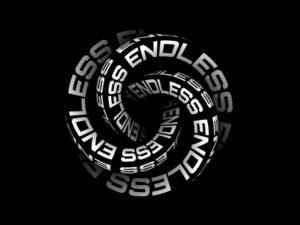Motion design has become one of the most influential tools in visual storytelling. From marketing videos to app interfaces, it blends graphic design principles with animation techniques to bring static visuals to life. Understanding the types of motion design in animation is essential for any creator who wants to craft engaging, clear, and memorable content.
In this article, we’ll explore the main styles of motion design, their strengths, and when to use each. By the end, you’ll have a clear roadmap to choose the right type for your next project.
What is Motion Design?
Motion design, sometimes called motion graphics, is the art of adding movement to graphic elements like shapes, icons, and typography. It combines principles from traditional animation with modern design trends, resulting in visuals that are dynamic, interactive, and appealing.
Unlike full animation, which often focuses on storytelling and character development, motion design is typically used to convey messages quickly and clearly. It’s perfect for marketing campaigns, product demos, explainer videos, and user interface enhancements.
Why Motion Design Matters
-
With attention spans shrinking in the digital age, audiences respond better to movement than static visuals. Motion design helps brands:
-
- Communicate faster – Animated visuals deliver messages more effectively than text alone.
- Communicate faster – Animated visuals deliver messages more effectively than text alone.
-
- Engage the viewer – Moving elements grab attention instantly.
- Engage the viewer – Moving elements grab attention instantly.
-
- Enhance brand identity – Consistent motion styles can become part of a brand’s signature look.
- Enhance brand identity – Consistent motion styles can become part of a brand’s signature look.
-
- Explain complex ideas – Animation can break down complicated topics into digestible visuals.
- Explain complex ideas – Animation can break down complicated topics into digestible visuals.
These benefits explain why understanding the types of motion design in animation is critical for businesses, marketers, and designers. -
Main Types of Motion Design in Animation
1. 2D Motion Design

2D motion design is the foundation of modern motion graphics. It uses flat, two-dimensional images and animations, making it ideal for:
- Explainer videos
- Social media ads
- Educational animations
Advantages:
- Cost-effective production
- Wide range of creative possibilities
- Faster turnaround than 3D animation

2. 3D Motion Design
3D motion design adds depth, realism, and immersive perspectives. It’s widely used in:
- Product visualization
- Gaming environments
- High-end commercials
Advantages:
- Realistic textures and lighting
- Strong visual impact
- Ability to rotate and explore objects in space
3. Kinetic Typography

Kinetic typography animates words and letters in creative ways, making them more engaging and memorable. This style is common in:
- Music videos
- Brand promos
- Inspirational quotes
Advantages:
- Enhances the emotional tone of messages
- Makes text visually appealing
- Keeps viewers focused on key points
4. Animated Infographics
This style combines data visualization with animation, turning numbers and statistics into engaging visuals. Common uses include:
- Reports and presentations
- Social awareness campaigns
- Corporate videos
Advantages:
- Simplifies complex data
- Encourages better audience retention
- Makes information more shareable
5. UI/UX Motion Design
UI/UX motion design enhances the usability of websites and apps through animations such as:
- Smooth page transitions
- Interactive button effects
- Loading animations
Advantages:
- Improves user experience
- Guides user navigation
Creates a polished, professional interface
How to Choose the Right Motion Design Style
When selecting a motion design style, consider:
-
- Your Goal – Do you want to explain, promote, or entertain?
- Your Goal – Do you want to explain, promote, or entertain?
-
- Your Audience – Who are you trying to reach? Younger audiences may prefer bold, fast-paced animations, while professional audiences might prefer sleek, minimalist designs.
- Your Audience – Who are you trying to reach? Younger audiences may prefer bold, fast-paced animations, while professional audiences might prefer sleek, minimalist designs.
-
- Your Budget – 2D is generally cheaper, while 3D requires more resources.
- Your Budget – 2D is generally cheaper, while 3D requires more resources.
Your Brand Style – Match animation colors, pacing, and design with your brand identity.-
Looking to enhance your visual content? Pair your animations with our graphic design service to create a cohesive and professional brand identity
Final Thoughts
The types of motion design in animation offer endless creative possibilities. Whether you’re using 2D animation for an explainer video, 3D visuals for immersive storytelling, or kinetic typography to highlight a message, choosing the right style can elevate your content’s impact.
By understanding each type’s strengths, you can create animations that not only look great but also achieve your communication goals.
FAQ About Types of Motion Design in Animation
Q-What are the main types of motion design in animation?
The main types include 2D motion design, 3D motion design, kinetic typography, animated infographics, UI/UX animations, product animations, and mixed media motion design. Each serves different storytelling purposes—from simple flat graphics to complex 3D visuals and interactive UI effects.
Q-What is kinetic typography and where is it used?
Kinetic typography animates text dynamically to emphasize messages and evoke emotions. It makes written content engaging and is frequently used in music videos, promotional content, and title sequences.
Q-How can product animations improve customer understanding?
Product animations showcase product features through rotating views, zooms, or exploded visuals, helping customers grasp complex details and boosting confidence in purchases.
Q-Which type of motion design is best for explainer videos?
2D motion design and animated infographics are popular choices for explainer videos because they effectively simplify concepts using clear visuals and smooth animation.
Q-How do the principles of motion design apply across different animation types?
Principles like easing, offset and delay, parenting, masking, parallax, and transformation help create smooth, natural, and compelling motion that guides viewers’ attention regardless of the type—2D, 3D, kinetic typography, etc
Q-Which type of motion design is best for explainer videos?
2D motion design and animated infographics are popular choices for explainer videos because they effectively simplify concepts using clear visuals and smooth animation.
